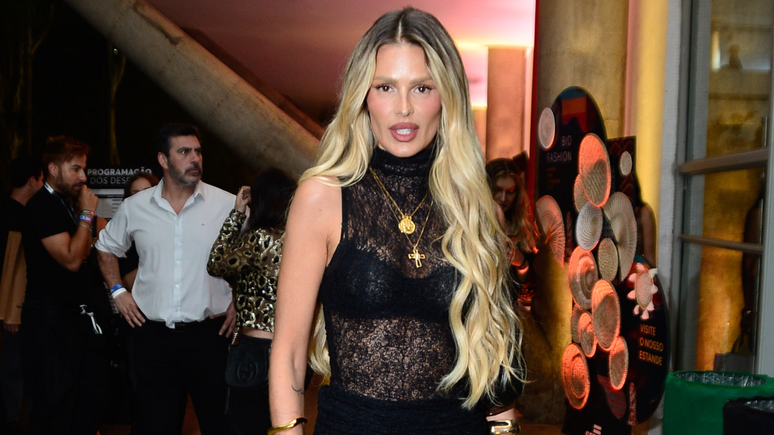Learn more about mindfulness meditation and how to incorporate it into your routine.
In the accelerated pace of routines where people have less and less time and face more and more pressure, it is not difficult that the body and mind are often weakened. In the face of this, finding ways to have a better quality of life, in all areas, is essential for well-being and this is where mindfulness and meditation come into play. Among these possibilities, mindfulness meditation is an excellent option for working on mind care, with consequent physical benefits for practitioners as well. Improved concentration, sleep quality and stress reduction are some of the benefits brought by the practice.
What is Mindfulness?
Translated into Portuguese, mindfulness means full attention. The practice is about focusing on the here and now, focusing on the present. Therefore, it is an exercise that requires concentration to develop greater awareness of thoughts, sensations and emotions. Awareness consists of three simple steps:
- Find something to focus on, defined as an anchor;
- Keep your attention on the anchor;
- Watch the thoughts.
This necessary focus on mindfulness can be practiced in a number of ways, such as meditation or being more present in daily activities. Over time the practice becomes easier and helps the individual to better deal with daily problems, helping him in situations of stress and anxiety.
What is Meditation?
Meditation refers to the various techniques responsible for promoting relaxation, self-awareness, and concentration. That is, it is a mental practice for training concentration and conscious direction of the mind. While there are many approaches and techniques to meditation, most involve finding a quiet place, sitting in a comfortable position, and directing your attention to an object of focus: your breath, a repetitive word or phrase (mantra), a visual image or a bodily sensation image.
What is the difference between mindfulness and meditation?
Since both are practices in which attention and concentration are required, does this mean that mindfulness and meditation are the same thing? NO! The two practices are often used together for mental well-being, but have differences between them. Mindfulness, or mindfulness, is a specific way of focusing on the present and can be practiced in formal meditation sessions, but it can also be applied in daily activities, bringing awareness to daily actions and experiences. Meditation can have different approaches and techniques, such as breathing meditation, transcendental meditation, guided meditation and mindfulness itself.
What are the benefits of practicing mindfulness meditation?
Mindfulness meditation has many benefits, including:
- Reduction of stress and anxiety;
- Improved concentration;
- Flexibility in the body;
- Insomnia control;
- Greater attention and concentration;
- Improved mental clarity and decision making.
html[data-range=”xlarge”] figure image img.img-f3068b92116e103992cac9bc258519a0zjowc8sf { width: 774px; height: 513px; }HTML[data-range=”large”] figure image img.img-f3068b92116e103992cac9bc258519a0zjowc8sf { width: 548px; height: 364px; }HTML[data-range=”small”] figure image img.img-f3068b92116e103992cac9bc258519a0zjowc8sf, html[data-range=”medium”] figure image img.img-f3068b92116e103992cac9bc258519a0zjowc8sf { width: 564px; height: 374px; }
What are mindfulness meditation techniques?
Applying mindfulness and meditation techniques can help reduce stress, increase mental clarity, and promote an overall sense of calm and emotional balance. Some of the main techniques are:
1. Breathing
As in other types of meditation, in mindfulness meditation the breath is an essential foundation. Paying attention while breathing is a way of telling our brains when to relax and reduce anxiety. Breathing is something so natural, that we hardly stop and focus on our breathing. However, correct and conscious breathing is essential for the body and mind.
2. Visual anchor
Another technique to use in mindfulness meditation is the visual anchor. It involves choosing an element or object as the focal point, helping to maintain the meditation as seeing the visual anchor and being aware of it is one way to stay focused in the practice. Also, especially in the beginning, some people end up having difficulty maintaining concentration when their eyes are closed, getting caught up in extraneous thoughts for the moment of meditation. In these cases, the visual anchor is also essential to maintain concentration.
3. Auditory anchor
Like the visual anchor, the auditory anchor is also a great technique for mindfulness meditation. In this case, you must choose a constant and recurring sound – such as the sound of the fan or the rain – while maintaining your concentration on it during the meditation.
How to start practicing mindfulness meditation?
For those who want to start practicing mindfulness meditation, it is possible to do it easily and without large investments. The biggest investment is your time, dedication and commitment to the practice. Some tips for beginners are:
Choose a quiet place
Silence is a great way to focus, as you can avoid distractions and stay focused in the moment. Look for a place in the house where you can be without being interrupted and without noise getting in your way.
Find a comfortable position
Comfort is also a very important step when practicing meditation, as you cannot keep moving all the time because you are uncomfortable. Therefore, choose a position where you can stay for long periods while the practice takes place.
check your breath
In mindfulness meditation, breathing plays a key role in serving as a bridge for the brain to disconnect from other happenings around it and can focus on the practice itself. Conscious breathing means paying attention to how air enters and exits the lungs. By doing this movement several times, you can regulate your breathing and bring your body into a calm state.
Focus 100% on the moment
The big key to mindfulness meditation is to focus on the present, in the moment. Therefore, when practicing the technique, the person must give 100% effort. That is, no more thinking about the cell phone, unanswered emails or purchases that need to be made next. You don’t have to spend long hours meditating, but in the time you have, devote yourself completely to the practice. Remember that the practice is individual and can vary according to each person’s preferences and needs. Start with short sessions and gradually increase the time as you get comfortable. Over time, you can experiment with different practices and find what works best for you.
Source: Terra
Ben Stock is a lifestyle journalist and author at Gossipify. He writes about topics such as health, wellness, travel, food and home decor. He provides practical advice and inspiration to improve well-being, keeps readers up to date with latest lifestyle news and trends, known for his engaging writing style, in-depth analysis and unique perspectives.








